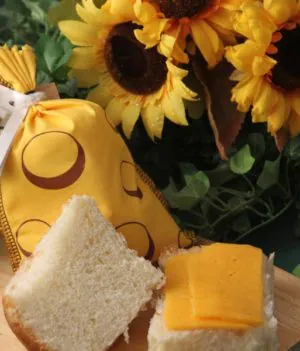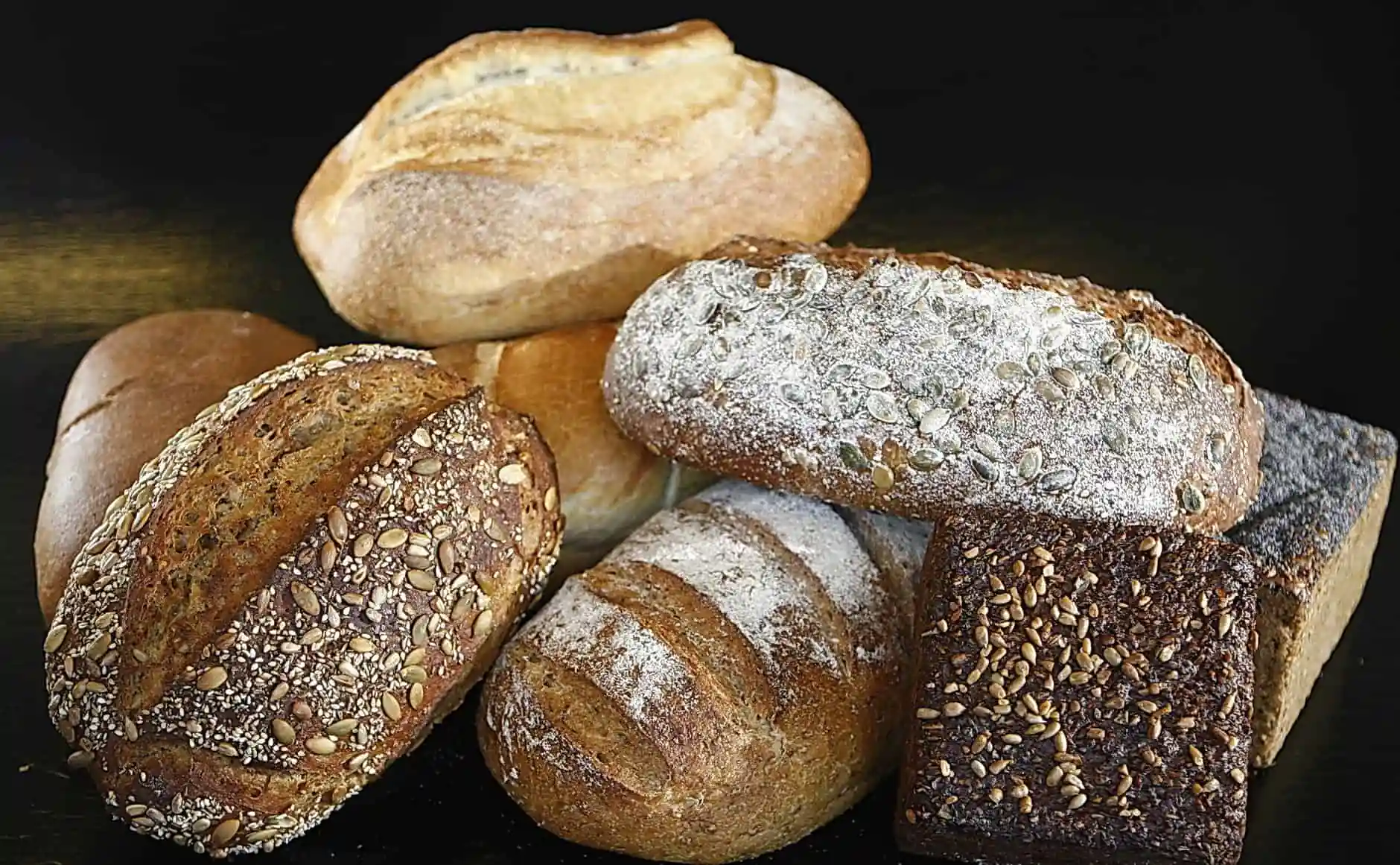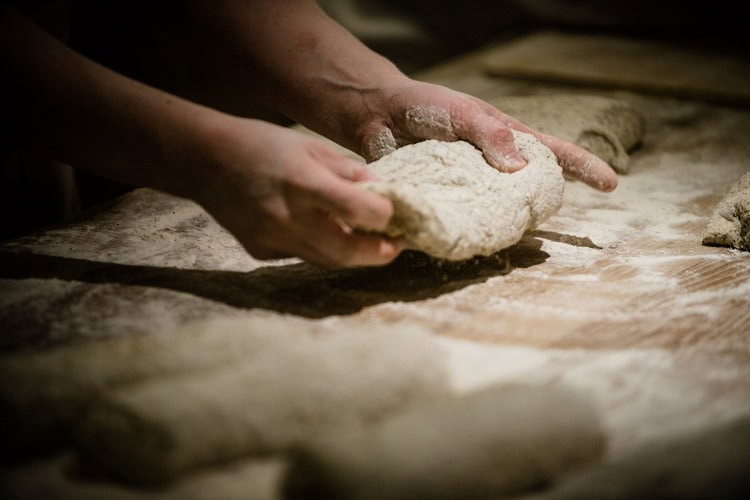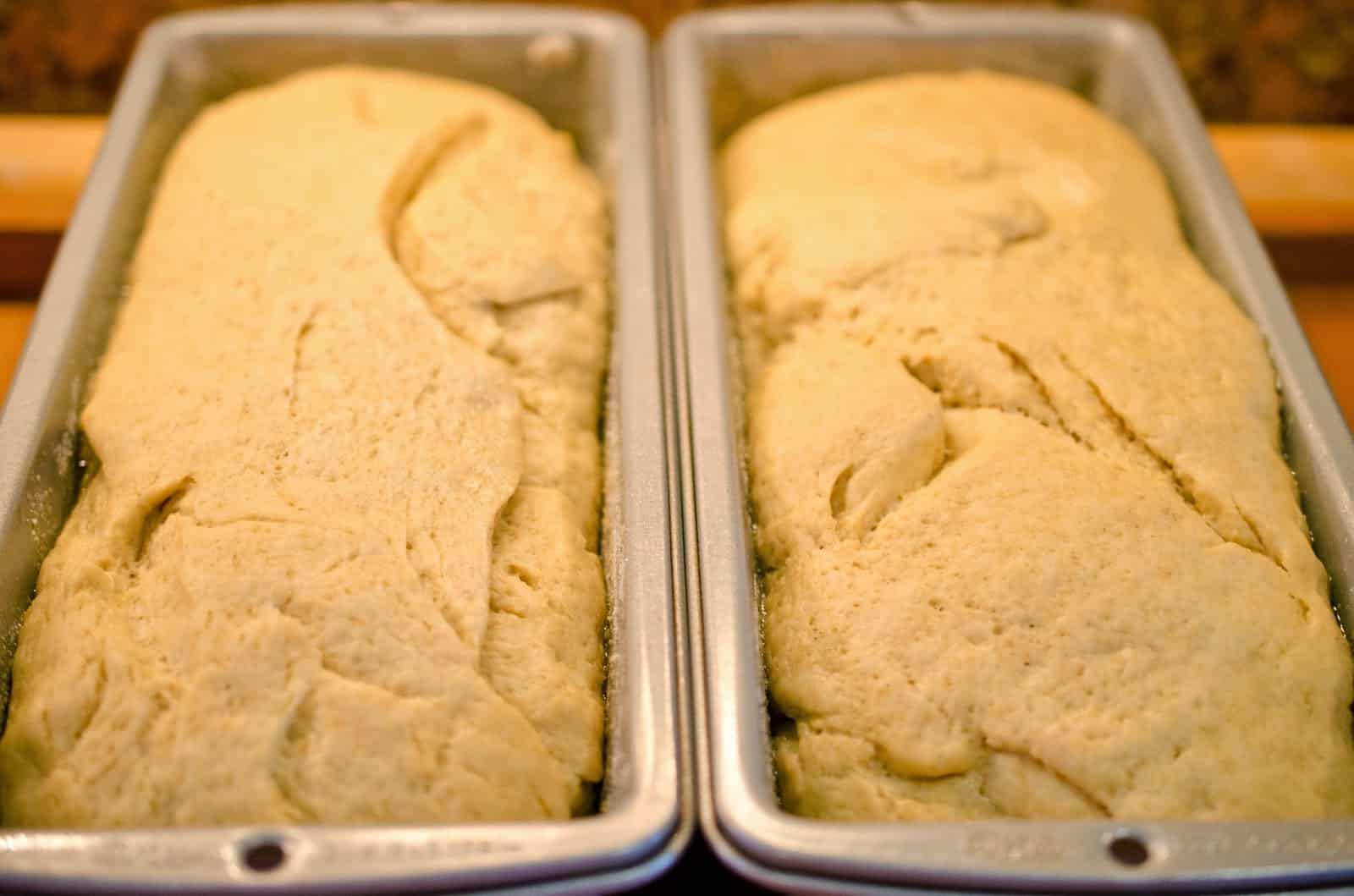Tag: Bread
Quick Baking Mixes to Get You Through the Week
You know how it is. Sometimes you just need some quick baking to get you through the week. Whether it’s for packed lunches or unexpected guests, we have the perfect solution for you: our baking mixes.
We offer a wide range of quick baking mixes. You can take them home and get them in the oven before anyone can even say “I’m hungry!”
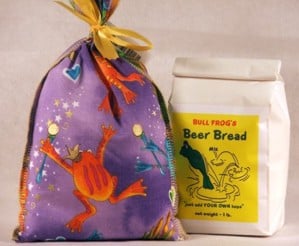
Bread Baking Mixes
Bread becomes quick and easy to make at home. Everything you need comes in a beautiful bag. You’ll have bread on the table in no time. We stock beer bread, cheezy beer bread, golden cornbread and red hot cornbread baking mixes. There’s something for everyone’s taste!
If you have guests coming at the last minute or you’re just pressed for time, you can turn this bread into a whole meal. Blend up a quick soup or even put out lots of cheese, pickles, and crackers. Let people help themselves and they’re sure to be happy. Everyone will be impressed that you have made your own bread. You don’t have to tell them it’s from a mix if you want to keep it as our secret!
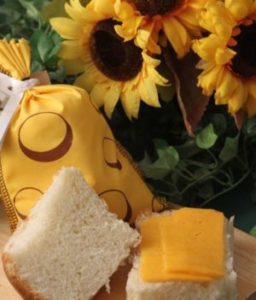
Cheezy Biscuits Baking Mix
Another savory choice is our cheezy biscuits baking mix, which is sure to wow a crowd or even keep the kids happy after school. Of course, we would serve cheezy biscuits with some cheese, but if that’s too much for you then they are great with some delicious rolled Amish butter. Ours is produced locally. Butterfat is one of the byproducts of cheese making. Because there are abundant amounts available from the local cheese artisans, Northern Ohio is a production hub for fresh Amish butter as well. It is made using milk from hormone-free cows and no preservatives are added. The taste is incredible. We stock it in both salted and unsalted varieties.

Muffin Mixes
For the sweet tooth, we have a great range of muffin mixes. These include strawberry, apple cinnamon, chocolate chip, pumpkin raspberry and “bran”ana.
Every sweet craving will be satisfied by these. You can take them to bake sales or serve them for an afternoon snack.
We hope that you enjoy our recommendations for baking mixes. Most of all, we hope that you have fun baking this week! Which are you going to try? Let us know in the comments!
Bread: How to Make It
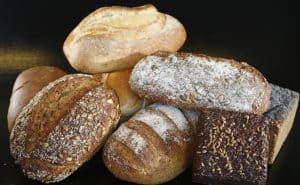
We all love bread. It’s perfect for breakfast, lunch and dinner. Of course, our preference is to eat it with cheese. Today, we’re going to show you three ways to make your own bread.
1. Make it completely from scratch
If you’ve never made bread before, you’ll find that it’s much easier than you think. All you need is flour, salt, yeast, some kind of fat, and water. You can change various elements of this, but we’ll show you how to make a simple white bread.
You will need:
500g/18oz strong white bread flour, plus a little extra for dusting
2 tsp salt
7g/ 1/4oz sachet of dried yeast
3tbsp olive oil or melted butter
300ml/10 fluid oz water
A mixing bowl
A loaf tin
1. Mix the flour, salt and yeast together in a bowl.
2. Make a well in the centre and pour in the water and oil/melted butter a little at a time.
3. Mix everything together until you have a dough. You may not need all of the liquid to achieve this, but likewise, if it is a little stiff you can add more water.
4. Knead the dough for 10 minutes until you have a silky, smooth dough. There are lots of videos available online if you haven’t kneaded a dough before.
5. Put the dough into an oiled bowl and leave it to rise for one hour. It should double in size.
6. “Knock back” the dough. This involves pushing the air out of it and kneading it again briefly.
7. Shape the dough into your loaf tin. If you don’t have a loaf tin, line a baking sheet with parchment and form the dough into a ball. In both cases, leave it to prove for another hour.
8. Bake at 420F for 25 – 30 minutes until it is golden brown and the loaf sounds hollow when you tap the bottom.
9. Cool on a wire rack.
You’ll want to dig in straight away, but allow it to cool slightly so that it is easier to slice.
2. Use a bread maker
A bread maker essentially involves putting the ingredients above into the bread maker and letting it do the work. They will usually come with lots of recipes so that you can make different types of bread as well as preparing pizza dough or cakes that you can then bake in the oven.
Often, you can even set a bread maker so that it makes bread overnight and you wake up to the smell of freshly baked dough in the morning.
3. Use a pre-made mix
These are available in lots of supermarkets. Usually, you simply add water, knead the dough and put it in the oven. This is a quick way to make bread but we would recommend making it from scratch if you have time. It only takes a little longer but the taste is incredible.
Once you’ve conquered the technique, you can start changing your creations. Try wholemeal, multigrain or even add herbs and spices.
Now all you have to do is decide how you want to eat your bread. Slather it with butter, add some cheese, dip it in soup: the choice is yours!
Barley Bread Is Not Only Tasty But…
A study in Sweden found that not only is barley bread healthy for us, but it can actually cut the risk of diabetes and obesity.

Image Source: healthadel.com/wp-content/uploads/2010/07/diabetes.jpg
The study involved middle-aged participants being asked to eat bread made from 85% barley for breakfast, lunch, and dinner. Around 11-14 hours after the last meal of that day, they were then examined for diabetes and cardiovascular disease risk indicators.
It found that a special mix of dietary fibers improved the person’s metabolism for up to 14 hours. Not only that, but it also decreased the blood sugar and insulin levels, making insulin sensitivity increased, it also increased appetite control. The bread was also found to help regulate the growth of healthy gut bacteria.
So now we know all the benefits to this delicious bread, spice up your meal times with this Barley Bread Recipe, while also keeping it healthy:
Image Source: eataly.com/wp/wp-content/uploads/2015/08/20130422_eataly_FSP9551_1500_q70.jpg
What You Need:
– 10 ounces barley flour
– 1 teaspoon kosher salt
– 1-ounce baking powder
– 2 tablespoons honey
– 1/4 cup canola oil, plus extra for greasing the pan
– 2 eggs
– 1 cup whole milk
What To Do:
Image Source: 4.bp.blogspot.com/-ZzSTxFU5Hpk/VH9to0_ku6I/AAAAAAAANAk/1r5x2_JFulQ/s1600/BarleyBread010.jpg
First, preheat the gas grill on low heat for at least 10 minutes
Then, lightly grease the sides and bottom of a 4 to 5-quart dutch oven with canola oil.
In a mixing bowl, mix together the flour, salt, and baking powder. Then in another mixing bowl, whisk together the honey, oil, eggs and milk. Add the wet and dry mixed ingredients together.
Pour the batter into the dutch oven, not covering with a lid. Then place the dutch oven on the grill and close the lid of the grill.
Cook with the lid closed for 35-40 minutes, or until the internal temperature reaches 190 degrees F.
Allow to cool off in the dutch oven for at least 5 minutes before putting on a cooling rack.
If you are baking in a traditional oven, bake at 350 degrees F for 25-30 minutes or until it reaches 190 degrees F.
And enjoy!
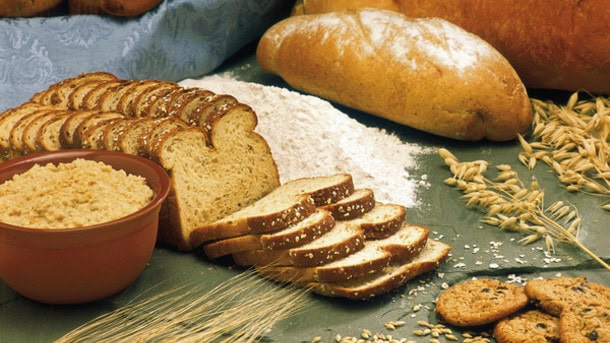
Image Source: bakeryandsnacks.com
Some of the World’s Best and Delicious Breads!
Everyone loves bread; from Irish soda bread to Palestinian spinach pies, enjoy as we explore the bread of the world.

Source: ThinkStock Images
Corn Tortillas
The secret to a tortilla rich in flavor is the masa being made from freshly ground white or blue corn. Fresh masa is widely available in cities of the large Mexican population, but a dry corn flour such as masa harina can also be used. In Mexico, the tortillas are flattened with a wooden press, and then the dough is pressed between sheets of plastic to keep it from sticking.
Gorditas
Gorditas are a favorite Mexico City street food. They are soft on the inside and crisp on the outside. These savory corn cakes make a good base for all types of toppings including shredded chicken to pulled pork. To make the gordita even more luscious you fry the dough in lard or butter instead of oil.
Palestinian Spinach Pies
The spinach which fills the fatayers isn’t flavored with feta, instead, it is spiked with lemon and sumac, which is a tangy Middle Eastern spice. This recipe is from Palestinian- born baker, Maha Ziadeh. Ziadeh forms the pies into a triangle, however the regular half-moon shape is a lot easier to do.
Lavash Crackers
Lavash can be a soft flatbread and is usually made with water, flour, and salt. The thickness all depends on how thin it is rolled out. Sometimes, the lavash is dusted with toasted sesame seeds or spices before baking.
Sephardic Challah
The Ashkenazi Jews of Eastern Europe favor eggy challah bread as their Jewish Sabbath bread. However, the Sephardic Jews of the Mediterranean, enjoy their challahs with anise and caraway, thus calling it the Sephardic Challah. Usually, challahs are braided, but Sephardic Challah is twisted into a round, turban-shaped loaf. They do this by stretching the dough into a long rope and then they coil it.
Irish Soda Bread
Irish soda bread is a delicacy of Ireland but is also a traditional product to many poor countries- this is because it is made with only the most basic of ingredients: baking soda, soured milk, salt, and flour. It’s perfectly accompanied by corned beef and cabbage or simply smeared with Irish butter.
Rosemary-Potato Focaccia Rolls
These rolls are gourmet rolls like no other. They are perfect for many different uses such as mini pizzas, mini flatbread, specialty sandwiches. It is a good idea to vary the toppings by season: using potato and rosemary in the winter and tomatoes and feta in the summer.
The Cinnamon Roll: A Heavenly Encounter
When you think cinnamon, you think sweet, you might think of a spice, you might think of bread, pancakes, coffee or even cereal. But the quintessential creation involving cinnamon is none other than the Cinnamon Roll. The ooey, gooey, warm taste of a cinnamon roll on a cold, winter day with a cup of hot cocoa or coffee simply cannot be beat. Cinnamon, sugar and butter, on their own, are relatively mundane ingredients. When they come together, though, is when the fireworks shoot off and we can clearly see the marriage of these ingredients present in every cinnamon roll made on this planet, albeit, different variations of this sweet treat exist.
 Source: https://www.leaf.tv/articles/the-history-of-cinnamon-rolls/
Source: https://www.leaf.tv/articles/the-history-of-cinnamon-rolls/
Cinnamon Rolls, while not having been around since the beginning of time, although sometimes its seems very hard to fathom our world every having lived without them, the ingredients used in making cinnamon rolls have been around for millenniums… literally. Bread, cinnamon, sugar and butter have all been around since before the time of Christ. Yeast bread dates back to around the year 1,000 BC and was first discovered in ancient Egypt. Cinnamon is nearly double in age as it dates back to around the time of the birth of Christ, circa 2,000 BC. Cinnamon was often imported from Egypt to China and was very highly regarded to where it was actually passed off as a gift for monarchs of the day. Butter, similarly, dates back to a similar period as cinnamon. Around the middle of the 19th century, machines began taking place of manual labor often done by farmers’ wives when it came to making mass quantities of butter. Finally, sugarcane was first discovered in a region, now called New Guinea. First cultivated in the US sometime in the 1700s, the first sugarcane refinery was built in the late 17th century in New York.
The Birth of the Cinnamon Roll
The very first cinnamon roll was created in Sweden. Cinnamon rolls are so well-acclaimed that it has its own national day, October 4th, National Cinnamon Bun Day. In Sweden, cinnamon rolls are not nearly as sweet and heavy as they are in the US. In Swedish practice, cinnamon rolls are made from dough that contains a hint of cardamom, a ginger-based spice. The cinnamon rolls are baked into muffin wrappers to make a more enjoyable and not so-messy treat.
Behind the Name
In Swedish lingua, “kanelbulle” is the coined term for cinnamon rolls, which literally means, no surprise, “cinnamon bun”. Other names that cinnamon rolls have adapted over its rich history is “sticky rolls” and “sticky buns”. However, with these various names comes various renditions of the original cinnamon roll. Some of these may not even contain cinnamon, but either more of a sugar-based glaze or a honey-based glaze.
Cinnamon Rolls hit the US
They say cinnamon rolls are a very popular commodity for breakfast in the US, but I say they’re great any time of the day. They don’t have to be restricted for breakfast only. One type of cinnamon rolls dating back to the 18th century called the Philadelphia-style cinnamon rolls, containing honey, sugar, cinnamon and raisins. Since the rise of the Philadelphia version, a number of renditions of the famed cinnamon treat have taken the nation by storm in the centuries since.
 Source: https://www.leaf.tv/articles/the-history-of-cinnamon-rolls/
Source: https://www.leaf.tv/articles/the-history-of-cinnamon-rolls/
Apple Butter: A Delightful Marriage of Sweet and Delicious

Apple butter is essentially a thicker and spicier version of applesauce, traditionally made by slow-cooking sliced or pureed apples in copper kettles for up to 12 hours or more. The apples are constantly stirred with long paddles. The heat causes the fruit’s natural sugars to caramelize, thus giving apple butter its distinctive deep brown color.
The spicy flavor of this spread comes from the addition of traditional apple pie spices such as nutmeg, cloves and especially cinnamon. Commercially produced apple butter is generally available in grocery stores, but the traditional homemade variety is usually canned in jars for personal consumption or sold at local farmers’ markets, craft shows and festivals.
Apple butter does not contain any dairy products, but derives its name from the buttery texture of the finished apple preserves. In fact, some people use it as a condiment or spread for sandwiches, in the same way others might use mayonnaise or mustard. The preserves are said to be especially good on ham or pork sandwiches, since many traditional Pennsylvania Dutch or German recipes combine apples and pork-based meats. Even if it is not used specifically as a sandwich spread, it is also popular as a topping for pancakes, biscuits and buttered toast.
The tradition of apple butter is thought to have been brought to the United States by Germans who settled in Pennsylvania. The so-called “Pennsylvania Dutch”, a corruption of Deutsch, or German, were very pragmatic by nature, and realized they needed a way to preserve their food during the winter months. Since apples were plentiful during the fall season, they first began preserving the fruit as apple jam or applesauce. The canned applesauce did not have the shelf life they had hoped for, however, so a slow-cooking process was developed. The extra cooking time turned the applesauce into a more stable product, and the added spices also aided in the preservation process.
Duplicating the traditional apple butter making process today has proven to be a challenge, however. Some historical societies and other traditionalists still hold sessions where it is made, using volunteers to stir the pots in shifts and also maintain the fires to provide the heat. Decent apple preserves can also be made in an electric slow cooker at home. Applesauce blended to a very fine consistency can be placed in a slow cooker along with the traditional cinnamon, nutmeg, all spice and cloves. This mixture should be allowed to reduce for at least 12 hours, with a slight gap in the lid to allow steam to escape. Specific recipes for converting applesauce into butter are available in a number of cookbooks and cooking websites.
Stop by Shisler’s Cheese House and pick up a jar of your own Apple Butter and let the sweet and delicious creations begin in your kitchen!
The Peanut Butter and Jelly Sandwich: An American Tradition!
One of the most common, famous and easy-to-make foods is the proverbial “Peanut Butter and Jelly Sandwich” otherwise known as “PB & J” adhering to modern lingo. It is easy to make, requiring only bread, jelly (or jam) and peanut butter as it satisfies any hungry stomach as a meal or a quick snack.
The History of the Peanut Butter and Jelly Sandwich…
The Peanut Butter and Jelly Sandwich has become such a staple of America that is seems like it has been around since the beginning of time. Ironically, with all the ingredients needed already around, it took quite sometime for someone to compile all of it into the renowned PB & J sandwich. Peanut Butter was originally paired with a diverse combination of other foods: pimento, cheese and celery, just to name a few. In an 1896 article in Good Housekeeping, a recipe suggested the use of a meat grinder to create peanut butter and the concoction was to be spread on a slice of bread. Later that year, a culinary magazine published a recipe for making “Peanut Butter Sandwiches”. The first reference of the pairing of peanut butter and jelly on bread came in the Boston Cooking-School Magazine of Culinary Science and Domestic Economics by Julia Davis Chandler in 1901. Through the early parts of the 1900s, the sandwich and its constituent ingredients gradually were made affordable and available to everyone as the price of peanut butter began to plummet. Later, it became a popular staple for children and during World War II, it was noted that that both peanut butter and jelly were listed on the U.S. soldiers’ military ration list, as claimed by the Peanut Board.
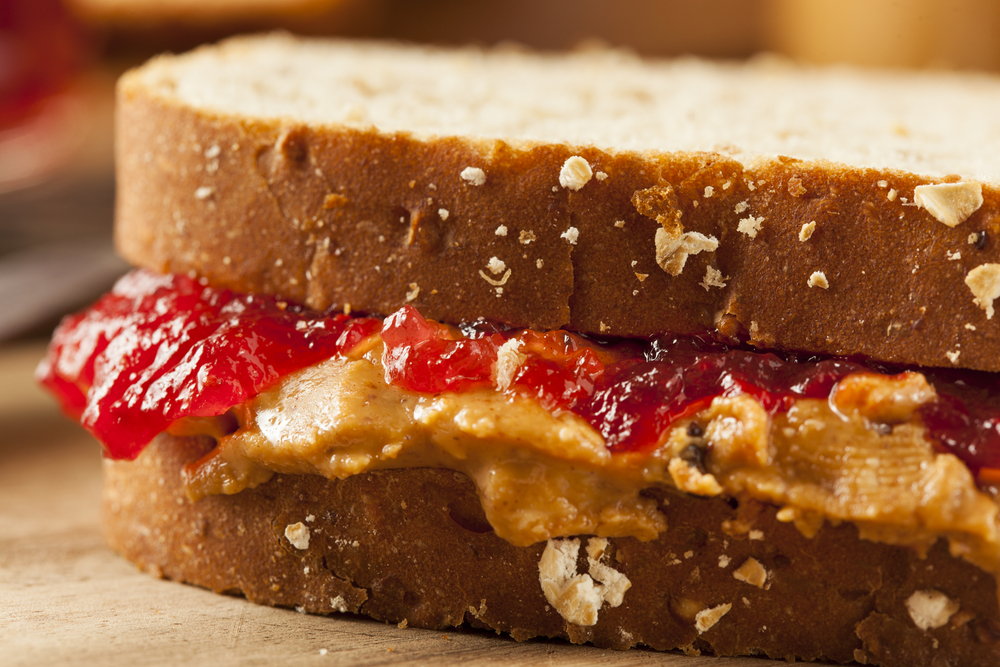
It’s Not Just Making the Sandwich, It’s The Quality of the Sandwich That Counts
We’ve all likely had a Peanut Butter and Jelly Sandwich at some point in our lives, or too many too count, which is the case for me. But what makes the PB & J sandwich experience a unique and sensational one? You’re probably thinking… wait, it’s just a regular PB & J sandwich… how sensational can it get? To that I say, with the right, quality ingredients, a PB & J sandwich can rock your world, and then some!
Using the jelly found on the third shelf down in your refrigerator and the peanut butter in the door shelf, one could see the mundane nature of the sandwich. Yes, it’s a good PB & J sandwich, but good could always be better. The ingredients are everything when making this sandwich. Everything from the type of bread, to the brand of jelly or jam, to the brand and texture of peanut butter that you use. Is the bread white, wheat, rye, sour dough or whole grain? Is the peanut butter smooth or chunky? Is the bread toasted or not? All of these subtle differences up front, make a world of difference in the end in the PB & J experience.

Suggestions to make your PB & J Experience A Memorable One
While a good PB & J sandwich features peanut butter and jelly usually picked up at your convenient store or grocery chain, let’s step outside of the realm of normalcy and add an explosion of flavor to our PB & J sandwich. While jellies, jams, peanut butter and breads can be found in your grocery store bread aisle, the best of these ingredients are found in locally and privately-owned specialty stores, such as here at Shisler’s Cheese House. Here we have an wide assortment of jams and jellies that are locally produced. We also carry some of the best peanut butter around made in Walnut Creek, Ohio. This is an Amish Peanut Butter made locally from a special blend of all natural ingredients. Amish Peanut Butter Spread is a sweet, creamy peanut butter that tastes great on just about anything. With a soft and silky texture, our Amish Peanut Butter Spread is a must try and will make any PB & J sandwich an incredible treat for your taste buds.
Let Us Help You Make That Incredible Peanut Butter and Jelly Sandwich
Had enough of PB & J sandwiches with those peanut butters and jellies in your refrigerator and in the grocery store aisle? Then let us, at Shisler’s Cheese House,
help you make that delicious creation! Click on ingredients below to begin your PB & J experience at our store:
Be sure to stop in and check out our selection of specialty breads that will complete your PB & J experience! While you’re in our store, be sure to check out all of our other specialty products including meats, cheeses, chocolates, cookies and a plethora of other decadent goodies! Visit our online store by clicking the image below!
**We are now selling Girl Scout Cookies! Stop in and get some today!**

